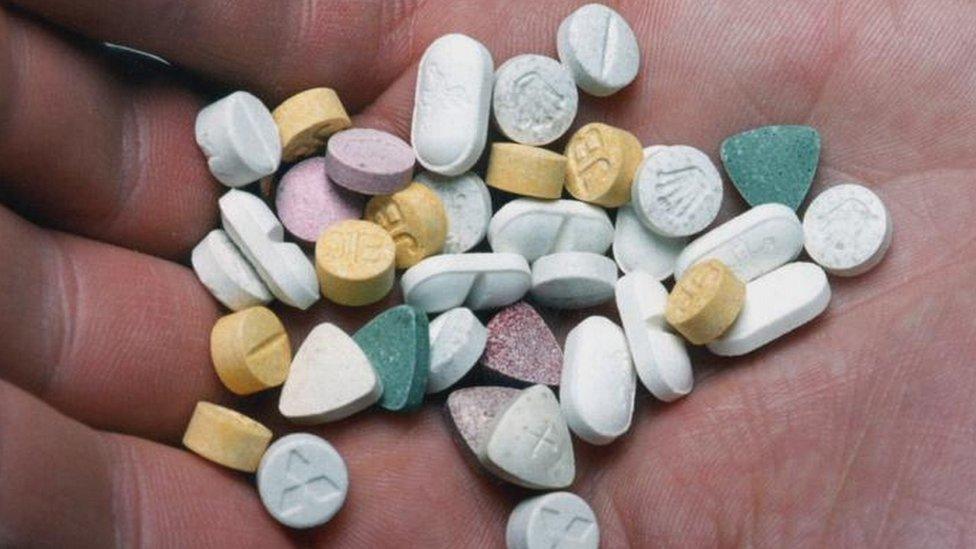MDMA strengths surge to 'potentially fatal' levels
- Published
'Laura' has stopped using MDMA but continues to suffer from the effects
The average strength of ecstasy tablets tested in Wales surged to potentially fatal levels last year, health chiefs have said.
An average of 156mg of MDMA was found in 135 ecstasy samples analysed by the health body, up 20% from 129mg in 2016.
Public Health Wales (PHW) said the "very high strengths" caused "a number of hospitalisations and acute events".
It warned people to "be aware of doses, duration of effects, the effects themselves and potential risks".
National substance misuse lead, Josie Smith, warned high dosages could cause confusion, agitation, comas and death.
She said: "Whereas 10 years ago, the average strength of a tablet was around 70-80mg, we're now looking at an average of 156mg, with a range right up to just under 300mg.
"At those levels, we are talking about potential for serious adverse consequences - serotonin toxicity, hospitalisation and even death."
She said any dose of more than 120mg was "very dangerous", adding: "Certainly that's been evidenced in a number of cases that we've seen within Wales and the wider UK."
Ms Smith said pills were more now potent because those manufacturing them were trying to "create their own market" after an increase in the availability of MDMA.
MDMA forms the base for ecstasy, before it is mixed with other chemicals to form a tablet. It is distinct from MDMA powder, which is swallowed or snorted.


Laura - not her real name - started using ecstasy and MDMA powder regularly as a teenager but the 20-year-old, who studies in Cardiff, has now quit.
She said: "It wasn't for the first six months to a year that I really started to notice the effects. People know you do get a 'come down' after taking it and I thought 'it's OK, I'll just feel rubbish for a couple of days'.
"But then, when the 'rubbish days' start to become normal, then you notice that there's something wrong.
"I will suffer with anxiety for the rest of my life now, I will be a lot more susceptible to depression and mental illnesses. I can only speak for myself, but a lot of my friends also suffer from different mental illnesses."

In June 2017, 15-year-old Shauna Davies, of Caerphilly, died after taking ecstasy for the first time, while a warning was issued about high-strength ecstasy in December, after a teenager in Pembrokeshire needed hospital treatment.
The data was released as part of PHW's annual report from the Welsh Emerging Drugs & Identification of Novel Substances project.
It includes analysis of drug samples sent in - this year there were 1,728 - and self-report forms from users.
Cocaine and MDMA remained the most commonly identified substances, followed by benzodiapines, which replaced synthetic cannabinoids (Spice).
It also raised concerns about the growing prevalence of benzodiazepines, such as diazepam, and the "growing worry" of "substance substitution" where samples contained substances the user had not expected.
- Published9 May 2018

- Published15 April 2018

- Published14 December 2017
